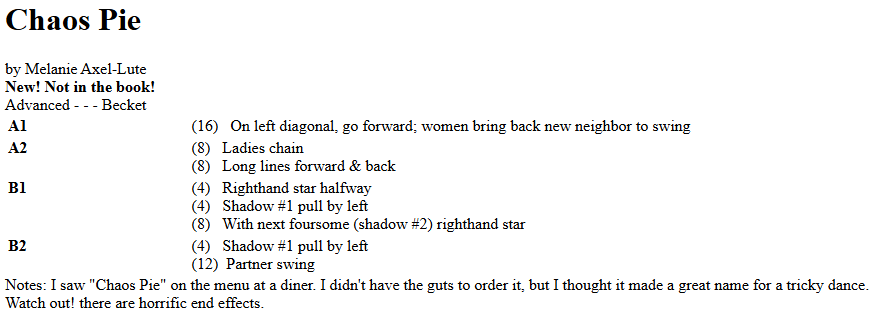created 2025-04-11, & modified, =this.modified
rel: Pina Bausch’s Dance Theater - Critical Dance Studies Campanology - Bell Ringing
Dance Notation
Dance notation is the symbolic representation of human dance movement and form, using methods such as graphic symbols and figures, path mapping, numerical systems, and letter and word notations.
Zorn Notation
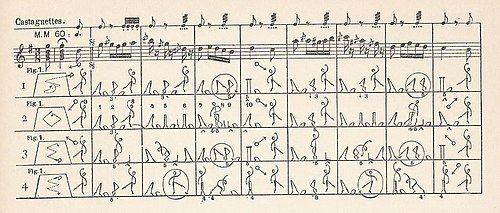
Labanotation
A system for analyzing or recording human movement, invented by Hungarian choreographer and dancer Rudolf von Laban.
Laban’s notation system is used as a type of dance notation in other applications including Laban Movement Analysis, robotics and human movement simulation.
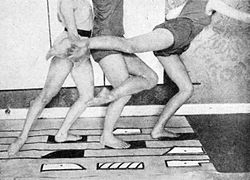
Labanotation uses abstract symbols to define
- direction and level of movement
- part of the body doing the movement
- duration of the movement
- dynamic quality of the movement

Eshkol Wachmann Notation
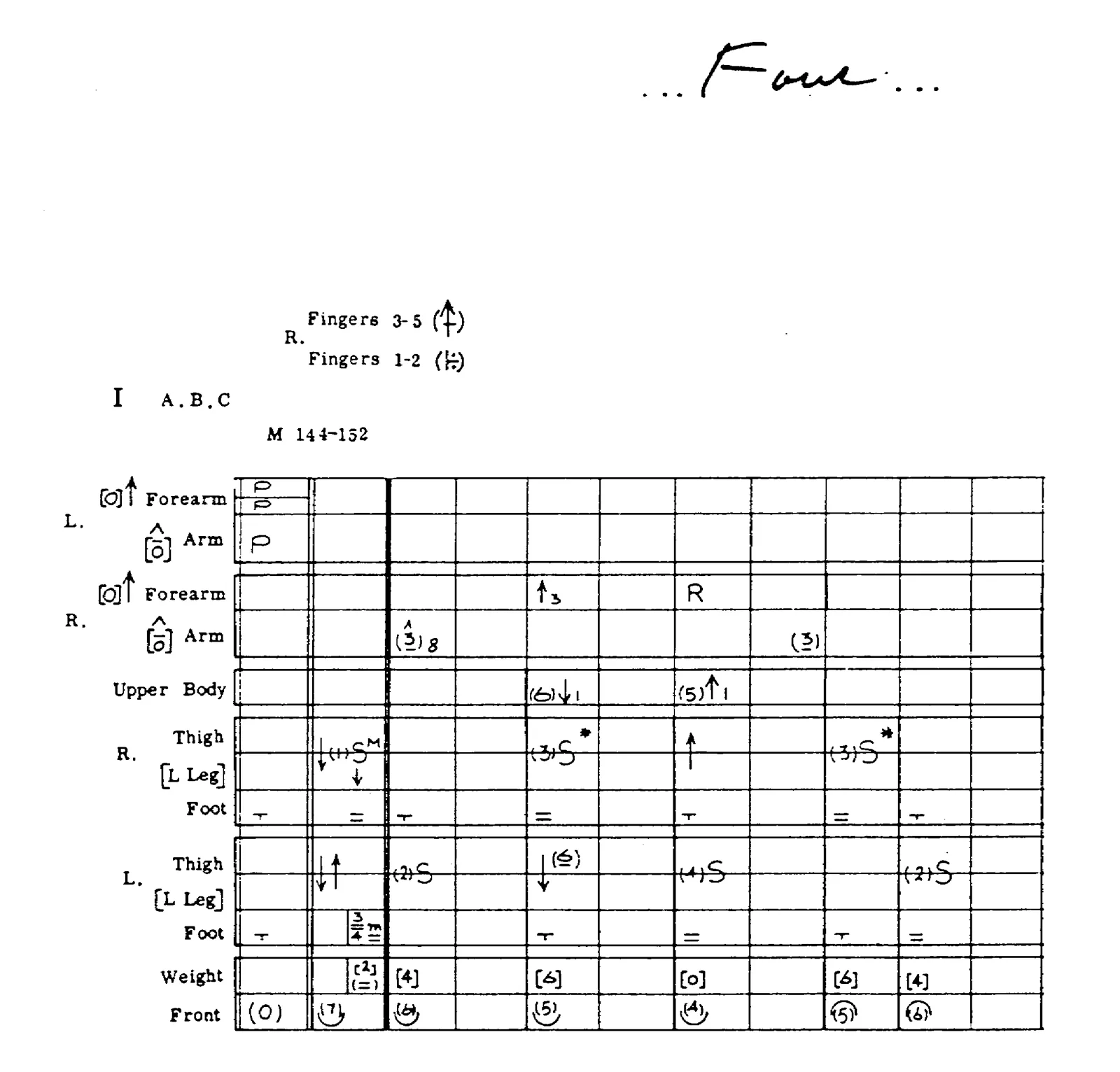
It took an anatomical and mathematical view of movement and initially had the aim of exploring the abstract shapes and designs of movement rather than recording existing dance patterns, which had been the primary goal of all previous systems. Numbers and a small selection of symbols are used to represent each possible physical motion. The full horizontal staff provides a space for each body segment.
Benesh Movement Notation
Benesh notation plots the position of a dancer as seen from behind as if the dancer is superimposed on a staff that extends from the top of the head down to the feet. From top to bottom, the five lines of the staff coincide with the head, shoulders, waist, knees and feet.

Orchésographie
An early form of dance notation by Thoinot Arbeau from 1589.
Etymologically meaning, writing of dance.
It contains numerous woodcuts of dancers and musicians and includes many dance tabulations in which extensive instructions for the steps are lined up next to the musical notes, a significant innovation in dance notation at that time
It was written partly in rebuttal of the Calvinist treatises published at the time which argued that dance was immoral and vain.
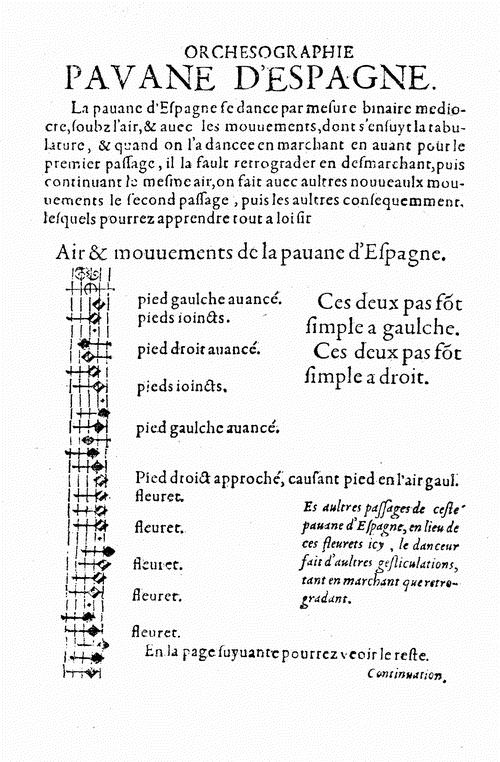
Contradance
rel:Contradance and Slow dance
Recalling this later, a catalog of contradance fragments each with names, moves and comments. The algorithmic nature to this is appealing.
The comment here at the end, “Watch out! There are horrific end effects” pleases me greatly.
